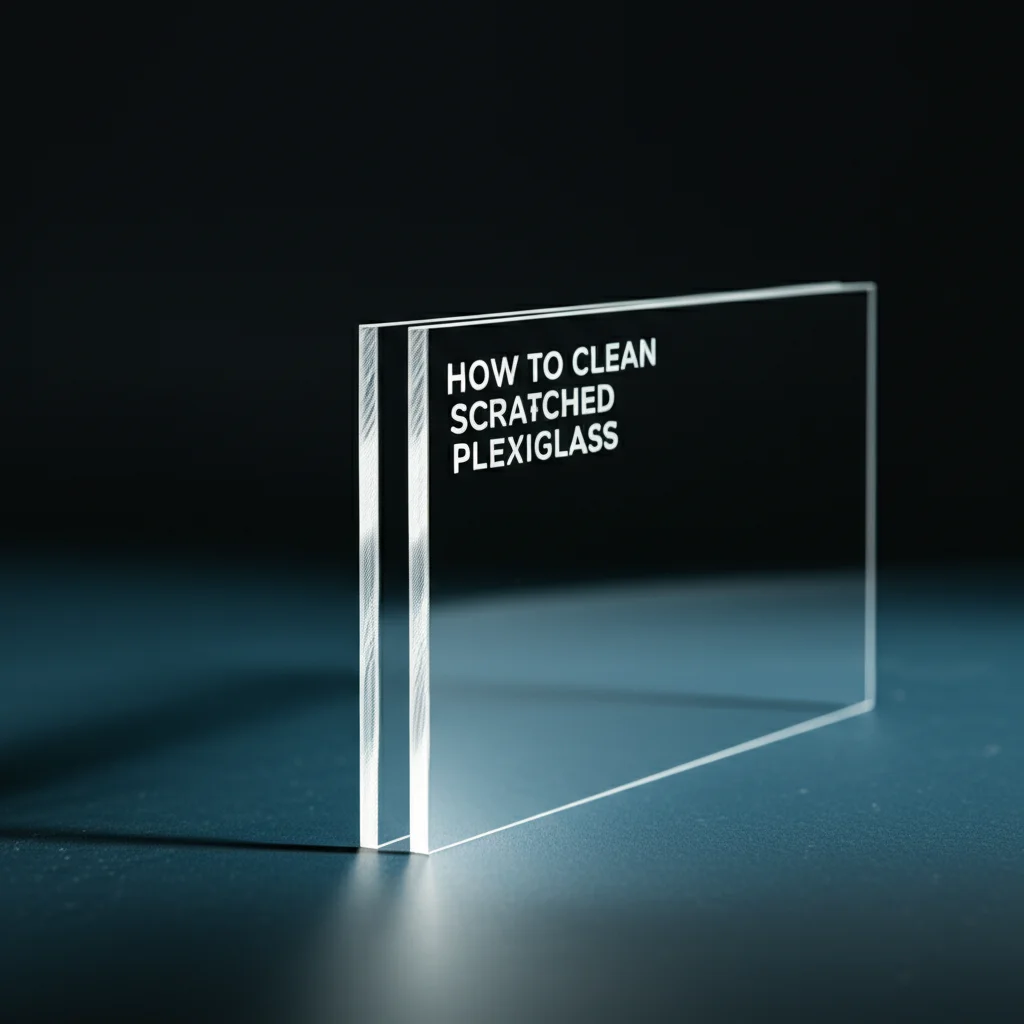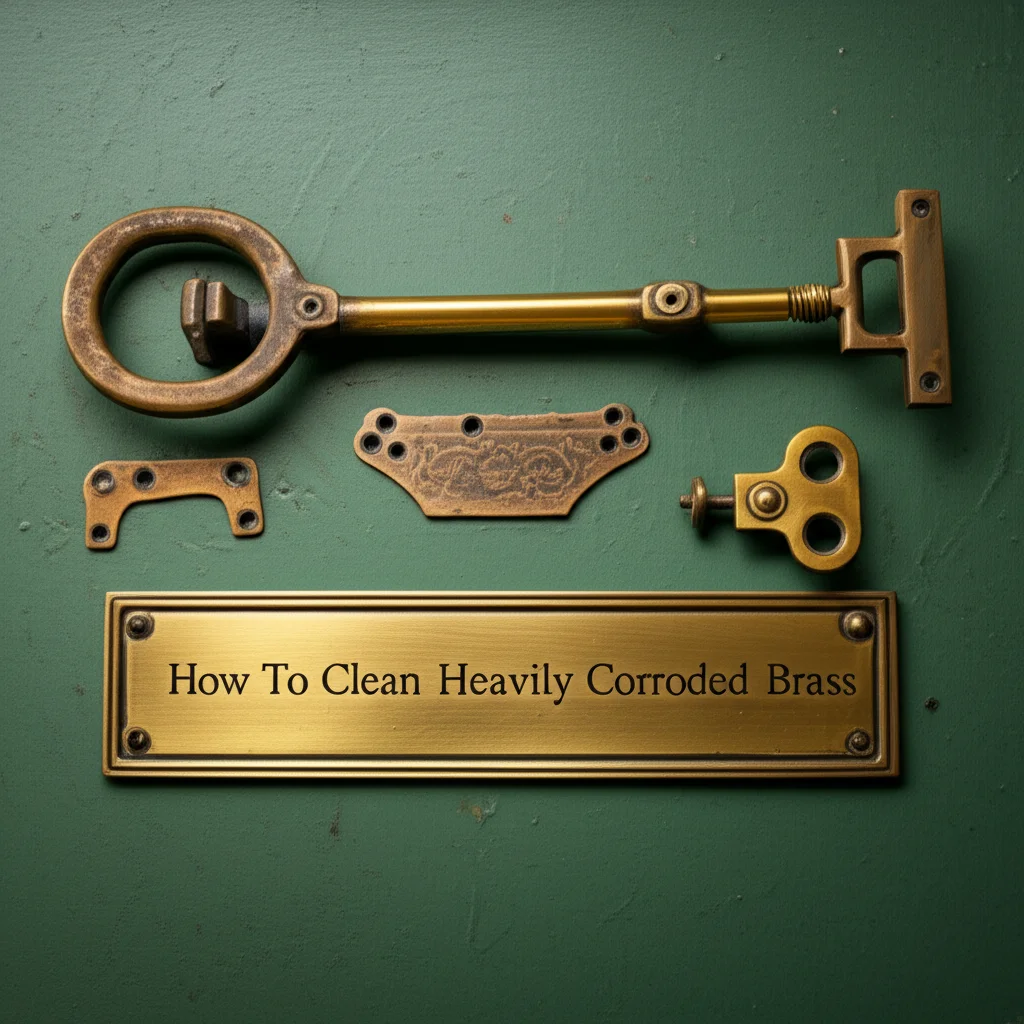· Todd Martin · Home Care · 18 min read
How To Clean Scratched Plexiglass

Revive Your Clear Surfaces: How To Clean Scratched Plexiglass
Do you have a beloved picture frame, a piece of furniture, or a protective shield made of plexiglass that looks cloudy or dull due to scratches? It is frustrating when a clear surface loses its transparency. Scratched plexiglass can diminish the appearance and function of many items around your home.
But do not worry, restoring clarity to these surfaces is often easier than you think. You can bring back the shine and transparency of your acrylic items. This guide will show you exactly how to clean scratched plexiglass using effective, straightforward methods. We will explore simple techniques, essential tools, and important preventive measures. Get ready to transform your scratched items and make them look new again.
Takeaway
- Assess Scratch Depth: Determine if scratches are light, moderate, or deep to choose the right repair method.
- Start Gentle: Always begin with the least abrasive technique. Use plastic polish or toothpaste for minor marks.
- Progress Carefully: For deeper scratches, gradually increase abrasive power with fine-grit wet sanding.
- Always Polish: Finish every repair with a dedicated plexiglass polish for optimal clarity and shine.
- Prevent Future Damage: Clean with soft cloths and non-abrasive cleaners to keep plexiglass clear.
To clean scratched plexiglass, assess the scratch depth first. For light scratches, use a plastic polish or white toothpaste and a microfiber cloth to gently buff the surface. For deeper marks, carefully wet sand with progressively finer grit sandpaper, then finish by polishing for a clear, smooth finish.
Understanding Plexiglass and Scratch Types
Plexiglass, also known as acrylic or PMMA, is a popular transparent plastic material. It is lighter and more shatter-resistant than traditional glass. This makes it a common choice for various applications, including picture frames, tabletops, aquariums, and even some shower enclosures. However, its softer surface makes it highly prone to scratching. Even a tiny speck of dust can create a mark if wiped improperly.
Understanding the type of scratch you are dealing with is the first crucial step in effective repair. Not all scratches are the same, and different methods work for different depths. I always start by feeling the scratch with my fingernail to gauge its severity. This simple test helps me determine the best approach.
Types of Scratches
- Light or Surface Scratches: These are typically hairline marks. You cannot feel them with your fingernail. They appear as a cloudy haze or minor scuffs. Often, these result from improper cleaning or light contact with other objects. They usually respond well to gentle polishing.
- Moderate Scratches: You can feel these with your fingernail, but they do not catch it firmly. They are more noticeable than light scratches. These require a slightly more abrasive approach, often involving very fine wet sanding followed by polishing.
- Deep Scratches: These scratches are significant. Your fingernail will catch firmly in the groove. They might even appear as a white line due to material displacement. Repairing deep scratches involves careful multi-stage sanding. It then needs extensive polishing to restore clarity. Sometimes, very deep scratches may not be entirely removable, but their appearance can be greatly improved.
Accurately identifying the scratch type saves time and prevents further damage. Using an overly aggressive method on a light scratch can make the problem worse. Conversely, a gentle polish will not touch a deep gouge. Always begin with the least abrasive technique. Progress to stronger methods only if necessary. This strategy ensures the best outcome for your plexiglass.
Essential Tools and Preparations for Plexiglass Cleaning
Before you begin the cleaning and scratch removal process, gather all necessary tools and prepare your workspace. Having everything ready beforehand makes the job smoother and more efficient. Using the right materials prevents additional damage to your plexiglass surface. I always make sure I have all my supplies lined up before I start.
Gathering Your Supplies
You will need a range of items depending on the severity of the scratches.
- Clean Microfiber Cloths: These are essential. They are soft, lint-free, and will not scratch the plexiglass further. Avoid paper towels or rough cloths, which can cause new marks.
- Mild Dish Soap: A small amount mixed with water is perfect for initial cleaning. Avoid harsh chemical cleaners or window cleaners that contain ammonia. Ammonia can degrade plexiglass over time.
- Clean Water: For rinsing and wet sanding. Distilled water is ideal to prevent mineral deposits.
- Plexiglass Polish or Plastic Polish: These specialized polishes are designed for acrylic surfaces. Brands like Novus Plastic Polish or Meguiar’s PlastX are excellent choices. For light scratches, white non-gel toothpaste can also work as a mild abrasive.
- Fine-Grit Wet/Dry Sandpaper: For moderate to deep scratches. You will need a range of grits, typically starting from 800 or 1000, then progressing to 1500, 2000, 3000, and even 5000 grit. This type of sandpaper is designed to be used with water.
- Spray Bottle: For keeping the surface and sandpaper wet during sanding.
- Polishing Compound (Optional): For very deep scratches, some automotive polishing compounds can be used as a pre-polish before the final plexiglass polish.
- Gloves: To protect your hands.
- Bucket: For water for rinsing sandpaper.
Pre-Cleaning and Workspace Setup
Proper preparation is vital for successful scratch removal. Start by thoroughly cleaning the plexiglass. This removes dust, dirt, and grime that could cause new scratches during the repair process.
- Dust Removal: Gently blow off any loose dust or debris from the plexiglass. You can also use compressed air for this step.
- Gentle Wash: Mix a few drops of mild dish soap with clean, lukewarm water. Dip a clean microfiber cloth into the solution and gently wipe down the entire plexiglass surface. Do not scrub or apply excessive pressure. This removes surface dirt and oils.
- Rinse Thoroughly: Rinse the plexiglass with clean water to remove all soap residue. You can use a second clean, damp microfiber cloth or hold the item under a gentle stream of water.
- Dry Carefully: Blot the plexiglass dry with a fresh, clean microfiber cloth. Ensure no water spots remain. Make sure the surface is completely dry before proceeding with scratch repair.
- Prepare Your Workspace: Choose a clean, well-lit area. Lay down a soft, clean towel or cloth on your work surface to protect the plexiglass from further damage during handling. Ensure the area is free of dust and debris. This helps prevent new scratches.
By taking these preparatory steps, you set yourself up for the best possible results. A clean surface and a prepared environment are essential for effective scratch removal. Proper care in this initial stage helps avoid creating more work later.
Method 1: Tackling Light Scratches on Plexiglass
Light scratches are the easiest to deal with. These are the hairline marks that make your plexiglass look a bit dull but do not catch your fingernail. They often result from routine cleaning with the wrong cloth or accidental gentle contact. Fortunately, you can often remove these types of blemishes with simple polishing agents. This method is the least abrasive and should always be your first approach.
Using Plastic Polish for Minor Marks
Specialized plastic polishes are designed to gently abrade and fill in tiny imperfections on acrylic surfaces. These polishes contain very fine abrasive particles that smooth out the surface without causing new damage. I keep a bottle of plastic polish handy for quick touch-ups.
Steps:
- Ensure Cleanliness: Make sure your plexiglass surface is completely clean and dry. Any remaining dust or debris can cause new scratches during polishing. I always re-wipe with a clean microfiber cloth just to be sure. If you also need to clean other transparent surfaces, consider checking out how to clean cloudy plexiglass for comprehensive tips.
- Apply Polish: Apply a small amount of plexiglass polish directly onto a clean, soft microfiber cloth. You do not need much – a dime-sized dollop is usually enough for a small area.
- Gentle Buffing: Using light to moderate pressure, rub the polish into the scratched area in small, circular motions. Work in sections if you have a larger area. Continue buffing for several minutes. You should see the polish start to dry and haze a bit.
- Inspect and Reapply: Wipe away any excess polish with a clean part of your microfiber cloth. Inspect the area. For stubborn light scratches, you might need to repeat the application process a few times. The key is patience and consistent, gentle buffing.
- Final Polish: Once the scratches are gone, or significantly reduced, use a fresh, clean microfiber cloth to buff the entire polished area to a clear, streak-free shine. This final buffing step makes a big difference in clarity.
The Toothpaste Alternative
If you do not have a dedicated plastic polish, regular white, non-gel toothpaste can serve as a surprisingly effective alternative for very light scratches. Toothpaste contains mild abrasives that work similarly to polishing compounds.
Steps:
- Preparation: Clean and dry the plexiglass thoroughly, just as you would for plastic polish.
- Apply Toothpaste: Squeeze a small amount of white, non-gel toothpaste onto a clean, soft microfiber cloth. Use only a pea-sized amount.
- Gentle Rubbing: Gently rub the toothpaste into the scratched area using small, circular motions. Apply light pressure. Continue rubbing for 1-2 minutes.
- Rinse and Dry: Rinse the area with clean water to remove all toothpaste residue. Use a clean, damp microfiber cloth for this. Then, blot dry with a fresh, clean microfiber cloth.
- Evaluate: Inspect the scratch. For deeper light scratches, you might need to repeat the process. Always rinse and dry completely between applications.
Remember, both methods rely on gentle abrasion to smooth out the surface imperfections. Always start with light pressure and increase it slightly if needed. Your goal is to remove as little material as possible while achieving clarity. This careful approach ensures the best results for your clear plastic items. For general plastic maintenance, learning how to clean stains on plastic can also be quite useful, helping keep all your plastic surfaces looking their best.
Method 2: Repairing Moderate Scratches on Plexiglass
When light scratches become a bit deeper, requiring more than just a simple polish, you need to step up your game. Moderate scratches catch your fingernail slightly but are not deep gouges. For these, wet sanding with very fine-grit sandpaper becomes necessary. This method carefully removes a thin layer of material to level the surface, making the scratch disappear. It sounds intimidating, but with patience, it is very effective.
Wet Sanding for Deeper Marks
Wet sanding is crucial because water acts as a lubricant and carries away sanding debris. This prevents clogging the sandpaper and reduces the risk of creating new scratches. Always use wet/dry sandpaper, specifically designed for this purpose.
Steps:
- Re-Clean the Surface: Even if you cleaned it before, give the scratched area another quick wipe with a clean, damp microfiber cloth. Ensure it is free of any dust.
- Choose Your Grits: For moderate scratches, I usually start with 1000-grit wet/dry sandpaper. If the scratch is still prominent after a minute or two, I might drop to 800-grit. Then, I will progressively move to finer grits: 1500, 2000, 3000, and sometimes even 5000. Each subsequent grit refines the surface and removes the sanding marks from the previous, coarser grit.
- Prepare for Sanding: Cut a small piece of your starting sandpaper (e.g., 1000-grit). Submerge it in clean water for a few minutes. This softens the paper and improves its performance. Keep a spray bottle of water nearby to keep the plexiglass surface and sandpaper wet throughout the process.
- Begin Wet Sanding:
- Thoroughly wet the scratched area on the plexiglass.
- Wrap the wet sandpaper around a small, soft block or your fingertips to ensure even pressure.
- Using light, even pressure, sand the scratched area in straight, overlapping strokes. Avoid circular motions at this stage, as they can create swirl marks. Work in one direction, then switch to a perpendicular direction for the next grit.
- Maintain constant water flow over the area. The water should look cloudy as you sand; this indicates material removal. If it looks clear, you need more water or new sandpaper.
- Do not press too hard. Let the sandpaper do the work.
- Continue until the scratch is visibly less prominent and the sanded area appears uniformly hazy.
- Progress to Finer Grits:
- Once satisfied with the 1000-grit, rinse the area and the sandpaper thoroughly.
- Switch to the next finer grit (e.g., 1500-grit). Re-wet the area and sand again, using perpendicular strokes to the previous grit. This helps identify if you have removed all marks from the previous grit.
- Repeat this process for each subsequent grit (2000, 3000, 5000). With each finer grit, the haze will become less opaque and more uniform.
- The goal is to leave a very fine, uniform haze from the final, finest grit.
Post-Sanding Polishing
After sanding, your plexiglass will look hazy, but the scratch should be gone. Now, it is time to restore its clarity. This step is crucial.
- Initial Polish: Apply a generous amount of plexiglass polish (or a rubbing compound designed for plastics) to a clean microfiber cloth.
- Buffing: Using firm, circular motions, rub the polish into the sanded area. The haze will gradually begin to clear, and the surface will start to shine. This step requires significant elbow grease and patience.
- Wipe and Repeat: Wipe away residue with a clean part of the cloth. Reapply polish and continue buffing until the haze is completely gone and the surface is clear. This might take several applications and extended buffing.
This method transforms moderately scratched plexiglass into a clear, smooth surface. Patience and careful attention to detail are your best allies in achieving professional-looking results. The progression of grits is key. Each step builds upon the last, ensuring a perfectly smooth finish.
Method 3: Addressing Deep Scratches in Plexiglass
Deep scratches are the most challenging to repair, but they are often still salvageable. These are the marks that catch your fingernail firmly, appearing as a significant groove or white line. Repairing them requires a more aggressive wet sanding approach and a lot more patience. The goal is to remove enough material to eliminate the deepest part of the scratch, then progressively smooth the surface back to clarity.
Aggressive Sanding for Significant Damage
For deep scratches, you will need to start with coarser grits of sandpaper than for moderate scratches. This removes material more quickly to reach the bottom of the scratch.
Steps:
- Initial Cleaning and Assessment: Begin by thoroughly cleaning the plexiglass surface. Assess the depth of the scratch one last time. This helps you choose your starting grit.
- Select Coarser Grits: For very deep scratches, I might start with 600-grit or 800-grit wet/dry sandpaper. For deep but not extreme scratches, 1000-grit might suffice. The key is to select a grit coarse enough to remove the scratch but fine enough to allow for subsequent refinement.
- Prepare and Sand:
- Cut a small section of your chosen sandpaper. Soak it in clean water for several minutes.
- Liberally wet the scratched area on the plexiglass with water from your spray bottle.
- Wrap the wet sandpaper around a sanding block or firm foam pad. This ensures even pressure and prevents finger marks.
- Apply moderate pressure and sand the scratch using straight, overlapping strokes. Work in one direction, then switch to a perpendicular direction after a few passes.
- Keep the surface and sandpaper consistently wet. You will see a milky white slurry form; this indicates you are removing material.
- Focus on the Scratch: Concentrate your sanding efforts on the immediate area around the scratch. Over time, broaden your sanding area slightly to blend the repair with the surrounding surface.
- Continue until the deep scratch is no longer visible and the area has a uniform, coarse haze. This step takes time.
- Progressive Fining:
- Once the deep scratch is gone, thoroughly rinse the area.
- Move to the next finer grit of sandpaper (e.g., from 800 to 1000, then 1500, 2000, 3000, and finally 5000-grit).
- For each new grit, re-wet the surface and sand in a direction perpendicular to the previous grit. This helps ensure you remove all marks from the previous, coarser grit.
- With each finer grit, reduce pressure slightly. The goal of these finer grits is to refine the surface and prepare it for polishing.
Extensive Polishing Post-Sanding
After sanding with the finest grit, your plexiglass will be uniformly hazy. The next step is critical: bringing back the crystal-clear transparency through extensive polishing. This is where patience truly pays off.
- Initial Polish Application: Apply a substantial amount of a dedicated plexiglass polish or a high-quality automotive plastic polish to a clean microfiber cloth.
- Aggressive Buffing: Using firm, consistent circular motions, work the polish into the hazy sanded area. You will need to apply a good amount of pressure. As you work, the polish will start to dry and turn hazy again.
- Wipe and Reapply: Wipe away the polish residue with a clean part of your microfiber cloth. Reapply more polish and continue buffing. You will likely need to do this multiple times. For very hazy areas, this process can take 10-15 minutes or more per section.
- Machine Polishing (Optional): For larger areas or stubborn haze, a low-speed rotary polisher with a foam pad designed for plastics can accelerate this step. Use a very low speed and keep the pad moving to avoid heat buildup, which can damage plexiglass.
- Final Shine: Once the haze is gone and the surface is mostly clear, switch to a fresh, clean microfiber cloth and use light, circular motions to buff the area to a brilliant, streak-free shine. This final buff removes any remaining residue and maximizes clarity.
Repairing deep scratches is a meticulous process. It requires careful progression through grits and thorough polishing. However, the satisfaction of seeing a severely damaged piece of plexiglass restored to its original clarity is well worth the effort.
The Art of Polishing and Finishing Plexiglass
After the hard work of sanding, whether for moderate or deep scratches, the final polishing step is what truly brings your plexiglass back to life. This is where the hazy, sanded surface transforms into a clear, shining one. Think of it as the grand finale of your restoration project. The right polishing technique and products make all the difference.
Bringing Back the Clarity
Polishing removes the microscopic sanding marks that create the hazy appearance. It smooths the surface on a microscopic level, allowing light to pass through without distortion. This gives plexiglass its characteristic transparency.
- Choose Your Polish Wisely: I highly recommend using a polish specifically formulated for plastics or acrylics. Brands like Novus Plastic Polish (typically a three-part system for heavy to fine polishing) or Meguiar’s PlastX are excellent choices. Automotive swirl removers or finishing polishes can also work well if they are non-abrasive and safe for clear plastics. Avoid polishes with silicone, as they can be difficult to remove later and may attract dust.
- Apply Polish with a Microfiber Cloth: Dispense a small amount of polish onto a clean, soft microfiber cloth. The cloth should be folded to provide a firm, even surface for application.
- Work in Small Sections: Apply the polish to a small area of the plexiglass at a time, especially after extensive sanding. This allows you to focus your effort.
- Buffing Technique:
- Circular Motions: Begin by rubbing the polish into the hazy area using firm, overlapping circular motions. Apply moderate, consistent pressure.
- Even Pressure: Ensure even pressure across the cloth. Avoid pressing too hard in one spot, which could create swirl marks or heat buildup.
- Keep Working: Continue buffing until the polish starts to dry and become clear. You will notice the haze slowly disappear as you work.
- Add More Polish if Needed: If the cloth becomes dry or the polish seems to disappear too quickly, add a little more polish.
- Patience is Key: This step requires patience. It can take several minutes of continuous buffing per section to achieve clarity, especially if you started with coarser sandpaper grits.
Achieving a Streak-Free Shine
Once the primary haze is gone, a final buffing step will elevate the clarity and remove any residual polish or streaks.
- Fresh Cloth for Finishing: Grab a brand new, clean, dry microfiber cloth. This cloth should be dedicated to the final buffing only.
- Light, Broad Strokes: Using very light pressure, buff the entire polished area with broad, sweeping circular or linear strokes. This removes any lingering polish residue and brings out the maximum shine.
- Inspect Against Light: Hold the plexiglass up to a light source. Look for any remaining haziness, swirl marks, or streaks. If you see any, reapply a tiny bit of polish to a fresh part of your cloth and continue buffing that specific area.
- Consider a Second Polish (Optional): If using a multi-stage polish system (like Novus), move to the finer “finish” polish after the initial “heavy scratch” polish. This refines the surface even further, resulting in superior clarity.
Mastering the art of polishing ensures that your hard work in sanding translates into a perfectly clear, gleaming plexiglass surface. This final touch makes all the difference, leaving your restored item looking as good as new. Taking the time to polish properly yields stunning results.
Preventing Future Scratches and Maintaining Plexiglass
Restoring scratched plexiglass is a rewarding effort. However, prevention is always better than cure. Plexiglass is inherently softer than glass and prone to scratching. Implementing proper cleaning and handling habits can significantly extend the lifespan of your clear plastic items and keep them looking pristine. Taking these simple steps will save you a lot of time and effort in the future.
- Plexiglass cleaning
- Scratch removal
- Acrylic repair
- Plastic restoration
- DIY home repair
- Clear plastic care
- Surface polishing





